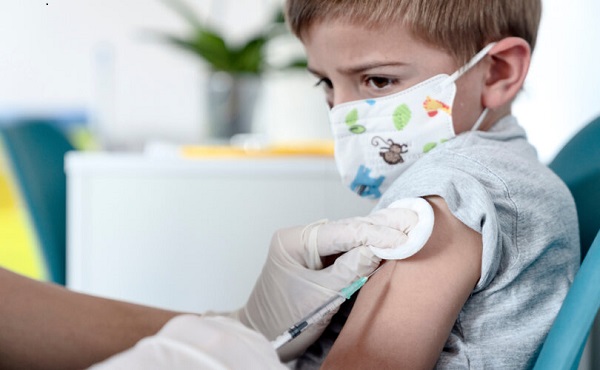Alberta
Province defends post-secondary funding changes. Says United Kingdom, Denmark, Finland, Hong Kong using performance-based funding

Minister Nicolaides meets with student leaders prior to announcing a new post-secondary funding announcement.
From The Province of Alberta
Transforming post-secondary funding
A new outcomes-based post-secondary funding approach will increase transparency and accountability and help build a modern and diverse workforce for the future.
Under the new funding model, a portion of government funding to colleges, universities and polytechnics will be based on achieving key performance measures. Performance measures will encourage institutions to improve services, increase efficiencies and create opportunities for Albertans through strong labour market outcomes and innovative programs and research.
“This is a new and completely transformative funding model for our universities, colleges and polytechnics. Our new approach will help ensure students are set up for success by encouraging institutions to produce job-ready graduates. Students make a significant investment in their post-secondary education, and it is essential we do everything possible to give them a rewarding career at the end of their studies. By shifting the focus to performance, we will ensure taxpayer dollars are being used in the most responsible way possible.”
“The University of Calgary has the ability to create the ‘arc to the future’ for Calgary and help re-imagine Alberta. The outcomes-based funding model is not only a tremendous opportunity to transform our post-secondary system, but to graduate a workforce that is capable of adaptation, with the skills and abilities to innovate and to support economic growth and diversification.”
“We look forward to working with government to implement the new outcomes-based approach to funding. This approach should improve predictability in government funding levels and enhance accountability for results delivery, both of which will benefit our students.”
“Alberta’s post-secondary presidents welcome the opportunity to work with the Government of Alberta, our learners and other stakeholders in building a performance-based model that will enable us to achieve an overall vision for Alberta’s post-secondary system, that builds on the strengths and core mission of each institution, and that maximizes the quality of our learning and research environments so that learners and communities can reach their highest potential.”
“Alberta’s students deserve an institutional funding model that is both modern and evidence-based. ASEC supports the changes made by the Government of Alberta towards a model that fits our values of transparency, accountability, affordability and predictability. We look forward to working with the government in the further development of the Campus Alberta Grant allocation.”
In addition to tying public investment to results, government is also transforming its relationship with post-secondary institutions by negotiating three-year funding agreements. Investment management agreements will include specific performance targets for each institution. They will also specify the government funding each institution will receive if they meet their performance targets. Three-year terms will help institutions plan for the future and build on their record of excellence.
The amount of funding tied to performance outcomes will begin at 15 per cent of operational funding for 2020-21 and gradually increase to a maximum of 40 per cent by 2022-23. A small number of performance measures will be introduced for the 2020-21 academic year, and more measures will be gradually introduced over the next three years to a total of about 15.
Quick facts
- Government provides operational funding to 26 universities, colleges and polytechnics every year, but historically, this funding has not been tied to any targets or outcomes. While government provides many different kinds of grants to post-secondary institutions, only operational funding through the Campus Alberta Grant will be tied to performance.
- The MacKinnon Report identified that the current post-secondary funding structure does not link funding to the achievement of specific goals or priorities for the province, such as ensuring the required skills for the current and future labour market.
- Outcomes-based funding is a global trend in higher education. About 35 U.S. states use a form of performance-based funding. Over the past 10 years, additional jurisdictions have implemented various methods of performance-based funding, such as the United Kingdom, Belgium, Spain, Portugal, Italy, Norway, Sweden, Denmark, Finland, Poland, Australia, New Zealand and Hong Kong.
- While performance measures will be finalized after discussions with post-secondary institutions, students and faculty, some examples may include:
- graduate employment rate
- median graduate income
- graduate skills and competencies
- work-integrated learning opportunities
- administrative expense ratio
- sponsored research revenue
- enrolment (including potential targets for domestic students, international students and under-represented learners)
- Performance measures will also be weighted differently depending on the institution. For example, different performance measures will be more important to different kinds of institutions.
- Institutions that meet all of their targets will receive 100 per cent of their allocated funding.
- If an institution does not meet its targets, the institution will receive funding that is proportionate to its level of achievement. For example, if an institution achieves 90 per cent of its target, it will receive 90 per cent of its funding for that target.
Alberta
On gender, Alberta is following the science

Despite falling into disrepute in recent years, “follow the science” remains our best shot at getting at the truth of the physical sciences.
But science, if we are to place our trust in it, must be properly defined and understood; it is at its essence an ever-changing process, a relentless pursuit of truth that is never “settled,” and one that is unafraid to discard old hypotheses in the face of new evidence.
And it is in this light—in the unforgiving glare of honest science—that Alberta Premier Danielle Smith’s three new legislative initiatives around gender policy are properly understood, notwithstanding the opprobrium they’ve attracted from critics.
Bill 26, the Health Statutes Amendment Act, proposes to prohibit the prescription of puberty blockers and cross-gender hormones for the treatment of gender dysphoria to youth aged 15 and under. It would allow minors aged 16 and 17 to begin puberty blockers and hormone therapies for gender “reassignment” and “affirmation” purposes only with parental, physician, and psychologist approval. The bill also prohibits health professionals from performing sex reassignment surgeries on minors.
Bill 27, the Education Amendment Act, seeks to enshrine parents’ rights to be notified if their kids change their names/pronouns at school, and it gives parents the right to “opt in” to what sort of gender and sex education their kids are exposed to in school.
And Bill 29, the Fairness and Safety in Sports Act, is designed to protect females in sports by ensuring that women and girls can compete in biological female-only divisions, while supporting the formation of co-ed opportunities to support transgender athletes.
Each of these initiatives is entirely reasonable, given what we know of the science underpinning “gender care,” and of the undeniable advantages that a male physique confers upon biological males competing in sports.
The notion that the trifecta of puberty blockers, cross-gender hormones, and revisionist surgery is a pathway to good health was a hypothesis initially devised by Dutch researchers, who were looking to ease the discomfort of transgender adults struggling with incongruence between their physical appearance and their gender identities. As a hypothesis, it was perhaps reasonable.
But as the UK’s Cass Review exposed in withering detail last spring, its premises were wholly unsupported by evidence, and its implementation has caused grievous harm for youth. As Finnish psychiatrist Riittakerttu Kaltiala, one of the architects of that country’s gender program, put it last year, “Gender affirming care is dangerous. I know, because I helped pioneer it.”
It’s no accident, then, that numerous European jurisdictions have pulled back from the “gender affirming care” pathway for youth, such as Sweden, Finland, Belgium, the Netherlands, and the United Kingdom.
It makes perfect sense that Canadians should be cautious as well, and that parents should be apprised if their children are being exposed to these theories at school and informed if their kids are caught up in their premises.
Yet the Canadian medical establishment has remained curiously intransigent on this issue, continuing to insist that the drug-and-surgery-based gender-affirming care model is rooted in evidence.
Premier Smith was asked by a reporter last month whether decisions on these matters aren’t best left to discussions between doctors and their patients; to which she replied:
“I would say doctors aren’t always right.”
Which is rather an understatement, as anyone familiar with the opioid drug crisis can attest, or as anyone acquainted with the darker corners of medical history knows: the frontal lobotomy saga, the thalidomide catastrophe, and the “recovered memories of sexual abuse” scandal are just a few examples of where doctors didn’t “get it right.”
As physicians, we advocate strongly for self-regulation and for the principle that medical decisions are private matters between physicians and patients. But self-regulation isn’t infallible, and when it fails it can be very much in the interests of the public—and especially of patients—for others to intervene, whether they be journalists, lawyers, or political leaders.
The trans discussion shouldn’t be a partisan issue, although it certainly has become one in Canada. It’s worth noting that Britain’s freshly elected Labour Party chose to carry on with the cautious approach adopted by the preceding administration in light of the Cass Review.
Premier Smith’s new polices are eminently sensible and in line with the stance taken by our European colleagues. None of her initiatives are “anti-trans.” Instead, they are pro-child, pro-women, and pro-athlete, and it’s difficult to see how anyone can quibble with that.
Dr. J. Edward Les, MD, is a pediatrician in Calgary, senior fellow at the Aristotle Foundation for Public Policy, and co-author of Teenagers, Children, and Gender Transition Policy: A Comparison of Transgender Medical Policy for Minors in Canada, the United States, and Europe.
Alberta
Alberta mother accuses health agency of trying to vaccinate son against her wishes

From LifeSiteNews
Alberta Health Services has been accused of attempting to vaccinate a child in school against his parent’s wishes.
On November 6, Alberta Health Services staffers visited Edmonton Hardisty School where they reportedly attempted to vaccinate a grade 6 student despite his parents signing a form stating that they did not wish for him to receive the vaccines.
“It is clear they do not prioritize parental rights, and in not doing so, they traumatize students,” the boy’s mother Kerri Findling told the Counter Signal.
During the school visit, AHS planned to vaccinate sixth graders with the HPV and hepatitis B vaccines. Notably, both HPV and hepatitis B are vaccines given to prevent diseases normally transmitted sexually.
Among the chief concerns about the HPV vaccine has been the high number of adverse reactions reported after taking it, including a case where a 16 year-old Australian girl was made infertile due to the vaccine.
Additionally, in 2008, the U.S. Food and Drug Administration received reports of 28 deaths associated with the HPV vaccine. Among the 6,723 adverse reactions reported that year, 142 were deemed life-threatening and 1,061 were considered serious.
Children whose parents had written “refused” on their forms were supposed to return to the classroom when the rest of the class was called into the vaccination area.
However, in this case, Findling alleged that AHS staffers told her son to proceed to the vaccination area, despite seeing that she had written “refused” on his form.
When the boy asked if he could return to the classroom, as he was certain his parents did not intend for him to receive the shots, the staff reportedly said “no.” However, he chose to return to the classroom anyway.
Shortly after, he was called into the office and taken back to the vaccination area. Findling said that her son then left the school building and braved the sub-zero temperatures to call his parents.
Following his parents’ arrival at the school, AHS claimed the incident was a misunderstanding due to a “new hire,” attesting that the mistake would have been caught before their son was vaccinated.
“If a student leaves the vaccination center without receiving the vaccine, it should be up to the parents to get the vaccine at a different time, if they so desire, not the school to enforce vaccination on behalf of AHS,” Findling declared.
Findling’s story comes just a few months after Alberta Premier Danielle Smith promised a new Bill of Rights affirming “God-given” parental authority over children.
A draft version of a forthcoming Alberta Bill of Rights provided to LifeSiteNews includes a provision beefing up parental rights, declaring the “freedom of parents to make informed decisions concerning the health, education, welfare and upbringing of their children.”
-

 Brownstone Institute3 hours ago
Brownstone Institute3 hours agoThe Most Devastating Report So Far
-

 Economy15 hours ago
Economy15 hours agoCOP 29 leaders demand over a $1 trillion a year in climate reparations from ‘wealthy’ nations. They don’t deserve a nickel.
-

 Alberta13 hours ago
Alberta13 hours agoOn gender, Alberta is following the science
-

 Energy14 hours ago
Energy14 hours agoOttawa’s proposed emission cap lacks any solid scientific or economic rationale
-

 Bruce Dowbiggin2 hours ago
Bruce Dowbiggin2 hours agoCHL Vs NCAA: Finally Some Sanity For Hockey Families
-

 Brownstone Institute1 day ago
Brownstone Institute1 day agoFirst Amendment Blues
-

 Crime2 days ago
Crime2 days agoMexican cartels are a direct threat to Canada’s public safety, and the future of North American trade
-

 Business2 days ago
Business2 days agoDEI gone?: GOP lawmakers prep to clean house in federal government




